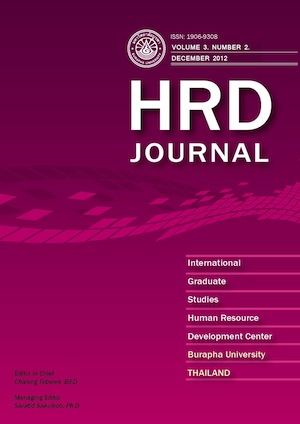A Test of a Causal Model of Children’s Development with/without Resilience as Mediator: A Comparison Between Children Affected/Not Affected By The 2004 Tsunami.
Keywords:
Tsunami, Child development, Resilience, Mediator, Elementary student, Protective factorAbstract
The purposes of this study were to validate two competing developmental models of the children exposed to the 2004 Tsunami disaster with and without resilience as a mediator. The sample consisted of 603 grade 4-6 students who were studying in the elementary schools in Phang-nga and affected by the 2004 Tsunami disaster. The developed model composed of six latent variables: tsunami experience, resilience, protective factors, child development, physical development and emotional development. Data, collected by questionnaires, were analyzed using SEM, the results of which indicated that both causal models were fitted to the empirical data. The two models accounted for the same amount, 85% of the variance in child development. Comparing the relative chi-squares revealed that the causal model with resilience as a mediator was more valid than the one without a mediator. The 2004 tsunami experience, as well as protective factors, had an impact on resilience which affected child development. Moreover, the community level indicator, especially social support, had a stronger effect on resilience as compared to the other indicators of protective factors.
Keywords : Tsunami, Child development, Resilience, Mediator, Elementary student, Protective factor
Downloads
How to Cite
Issue
Section
License
Copyright@HRD Journal, Burapha University






